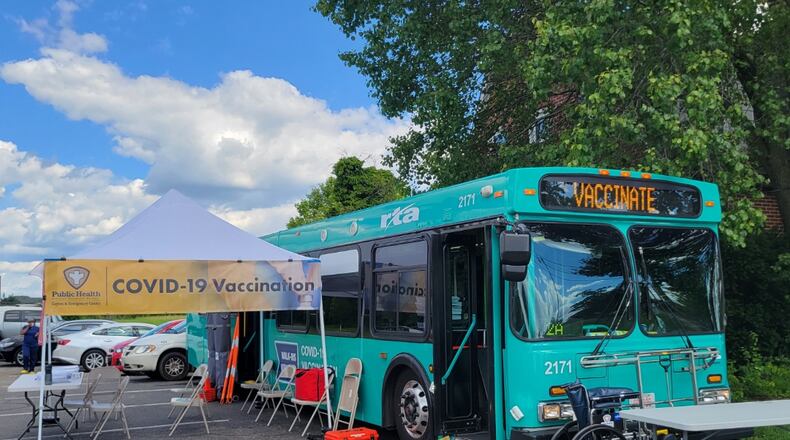Ohio recorded 1,769 COVID-19 cases in the last day, according to the Ohio Department of Health. It is the highest number of daily cases the state’s recorded in the last three weeks and the sixth time more than a thousand cases have been reported in the last eight days.
In the last 21 days, Ohio is averaging 855 cases a day, according to ODH. In the last seven days, Ohio is averaging 1,262 cases a day.
Just under half of Ohioans, including more than 80% of those 65 and older, are vaccinated against COVID-19. Vaccinated people who still contract the virus are far less likely to get hospitalized or even get symptoms, but some still do carry and pass the virus on to others.
Ohio hospitals employ about 251,000 and on Tuesday, the Ohio Hospital Association recommended the organizations independent adopt policies requiring workers get COVID-19 vaccines.
This doesn’t mean all hospitals will adopt a vaccine requirement, and the association recommended local factors determine whether, how and when such policies are implemented.
The Dayton VA Medical Center is already requiring frontline workers to get vaccinated in the coming weeks, because of a mandate through the Veterans Administration.
Mike Abrams, president of the hospital group, said the COVID-19 delta variant is a game changer in the fight to overcome this pandemic.
“Low vaccination rates across Ohio and the country endangers not only the unvaccinated, which includes children under 12 years old and individuals who are immunocompromised, but invites continued mutations of even more dangerous strains of the virus to develop, putting the health of our communities at serious risk,” he said in a statement.
He stated that hospital workers getting vaccinated against COVID-19 helps “ensure the long-term ability of the health care system to respond to the pandemic and the continuation of vital health care services.”
Vaccination rates are uneven around the state.
Ohio nursing homes reported anywhere from nearly 1% to nearly 100% of staff as vaccinated. Local counties reported rates ranging from 54% to 32% of residents with at least one dose.
About 1 in 4 Ohioans covered by Medicaid are vaccinated which is about half the rate of the general population.
The Dayton Daily News previously reported that Ohio Medicaid members were more likely to say they were masking and social distancing during the pandemic and the low vaccination rate stems from a range of access and information barriers.
CareSource and the other insurers who manage Medicaid policies are offering $100 gift cards, up from originally offering $50 gift cards, as well as other incentives to encourage more immunization. They are also working with pharmacists to give vaccine information and on demand vaccination.
“We have found that is probably where we’re going to have the biggest opportunity for the largest number to get vaccinated,” said Dr. Dale Block, CareSource’s chief medical officer for Ohio.
The vaccinations given out so far have helped blunt the spread of the delta variant, and many of the local clinics were only possible through volunteers who turned out to help their local residents.
For the COVID-19 pandemic, 524 Greene County volunteers gave over 13,412 hours of service helping with everything from vaccines to contact tracing to testing. Don Brannen, an epidemiologist at the health department, said at a recent recognition event that he didn’t think the health department could have pulled off what they did without volunteers.
Connie Peppard, a retired nurse, said she felt since she couldn’t help take care of people on the COVID-19 units, she wanted to help prevent people from getting COVID-19 in the first place.
“The people who came were so grateful to be there,” Peppard said.



